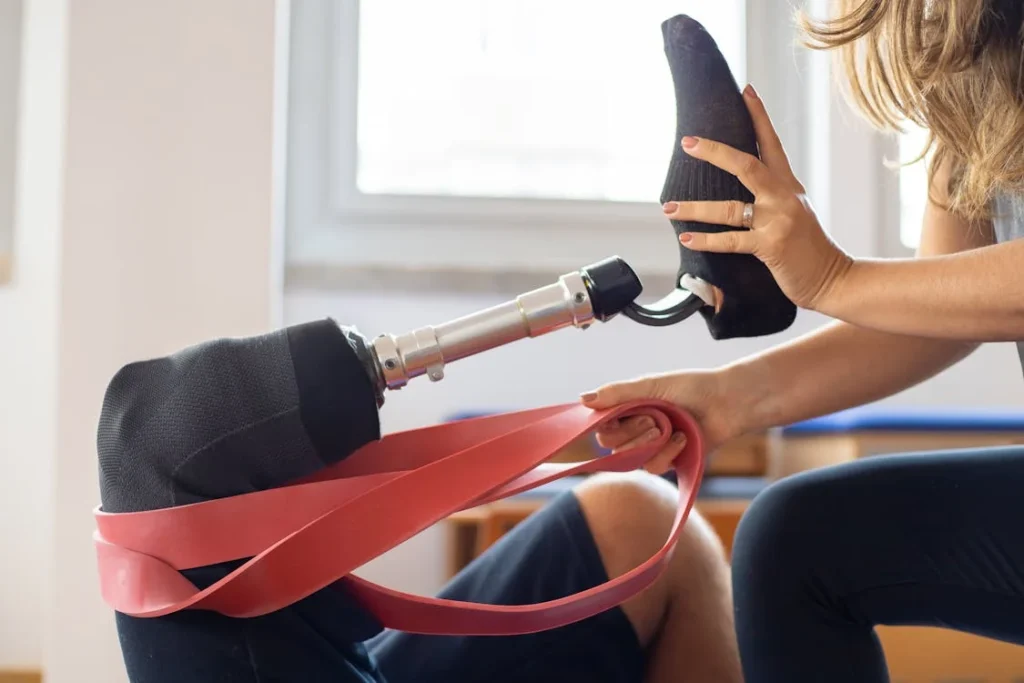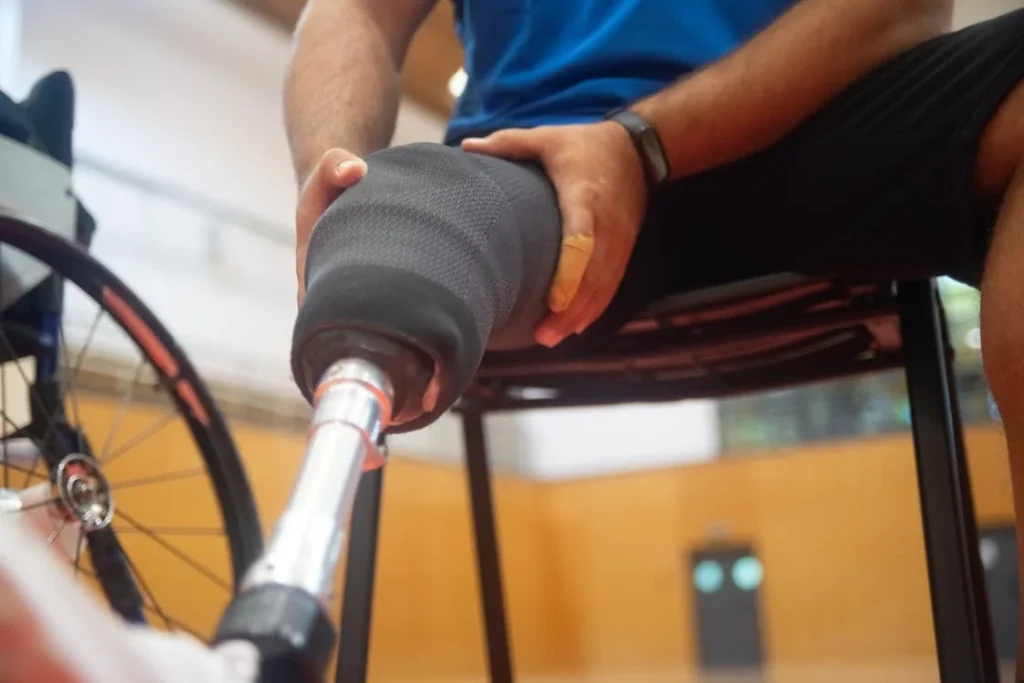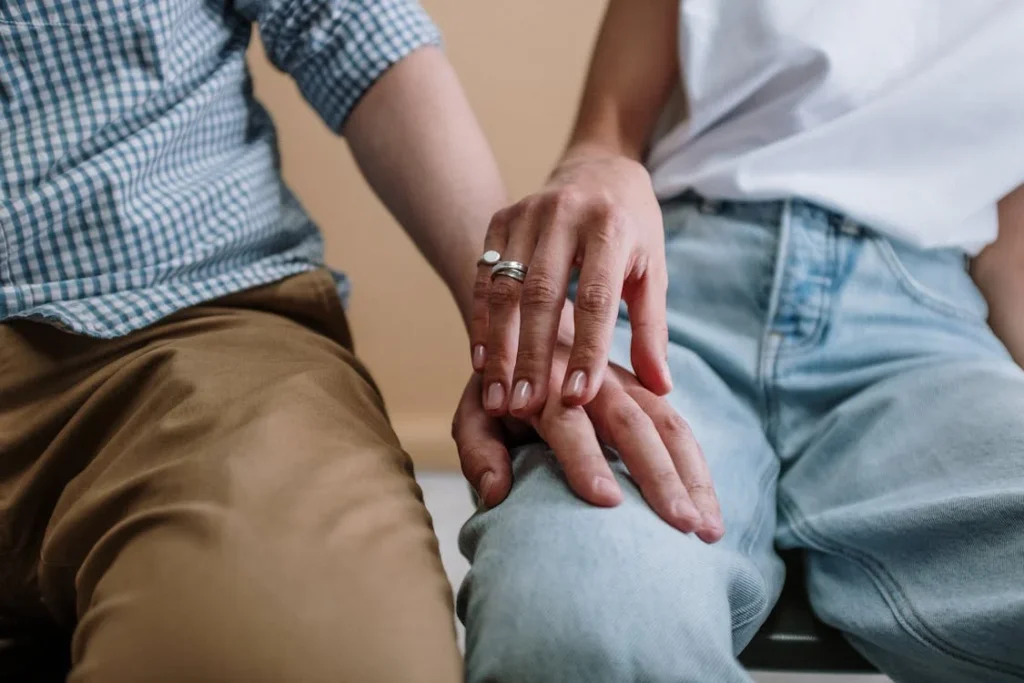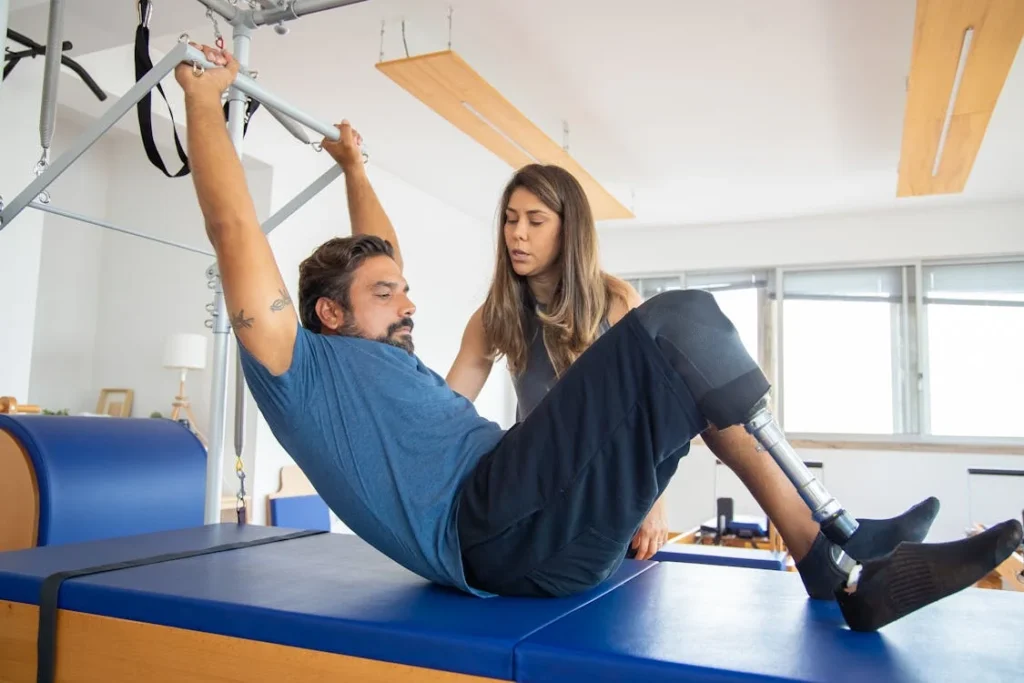Bringing up the topic of prosthesis early with your surgeon can feel intimidating. Many patients think they should wait, or assume the doctor will bring it up at the right time. But asking earlier — the right way — can help you walk again sooner, recover better, and get your life back faster. This guide from Robobionics will show you how to start the conversation, what to ask, and how to prepare — all in simple, clear steps.

Understanding Why Timing Matters
The Sooner You Start, the Better You Recover
After amputation, time is your biggest ally — or your biggest challenge. The earlier you start preparing for a prosthesis, the better your muscles stay strong, your balance improves, and your body stays flexible.
Waiting too long often leads to muscle shrinkage, stiff joints, and emotional stress that makes recovery harder.
When your surgeon sees that you’re motivated and asking the right questions early on, it also helps them plan better.
They can adjust surgical techniques, talk to your prosthetist, and even start therapy early — all of which improve your chances of walking sooner with less pain and fewer complications.
Surgeons often wait for signs that a patient is “ready.” But if you make your goals clear, they’ll know you’re serious and focused on long-term results. That’s why the conversation must start sooner — not just after healing, but even before or right after surgery.
How to Prepare Before You Talk
Know What You Want — and Why
You don’t need to know everything about prosthetics before talking to your surgeon. But you do need to be clear about what matters to you.
Do you want to get back to work quickly? Be able to walk your kids to school? Return to sports? Knowing your personal reasons helps you speak with confidence.
This isn’t about being demanding — it’s about showing your surgeon that you’ve thought things through. When they see you have a goal, they’re more likely to support a faster, smarter recovery path.
Gather some basic knowledge, too. You can read trusted blogs (like this one), talk to a prosthetist, or even speak to others who’ve gone through similar journeys.
Knowing a little bit about limb shaping, socket fitting, and temporary prosthetics gives you stronger footing in the conversation.
Talk to Your Support System First
If you have a spouse, child, parent, or caregiver involved in your recovery, talk to them first. Share your thoughts, explain why you want to bring up the prosthesis early, and ask for their views.
Having someone supportive by your side during the conversation with your surgeon can make a big difference — both emotionally and practically.
They might also help you remember key points, ask follow-up questions, or back you up if you’re feeling nervous. Plus, it shows your surgeon that this is a team effort — and that you’re serious about your recovery.

Bringing Up the Topic with Confidence
Choose the Right Moment and Setting
Surgeons are busy and often move quickly during rounds or appointments. That’s why you need to pick your moment wisely. Try to bring up the topic when your surgeon has time to talk — ideally during a scheduled consultation, not in the hallway or at the end of a rushed check-up.
Start the conversation with respect. Let your surgeon know that you appreciate their care and that you have a few questions about your long-term recovery.
Then gently introduce the topic: “I’ve been reading about how starting prosthetic planning early can help with walking again faster. Can we talk about when and how we can begin that process?”
This sets the tone for a collaborative discussion rather than making it feel like a challenge or demand.
Ask Open-Ended Questions That Show You’re Involved
Instead of simply asking, “When will I get my prosthesis?” — which can feel passive — try questions like:
- “How can I help my body get ready for a prosthesis?”
- “Is there anything we can do now to make prosthetic fitting smoother later?”
- “What are the signs you look for before recommending the first fitting?”
- “Would involving a prosthetist early help our planning?”
These questions show that you’re engaged, curious, and ready to do your part — and that changes everything. Surgeons are more likely to support patients who are proactive, not passive.
What to Expect from Your Surgeon’s Answers
You Might Hear a Cautious Response First
Some surgeons take a conservative approach. They might say, “Let’s wait for healing” or “We’ll see after a few weeks.” This isn’t always a no — sometimes it just means they’re watching for signs that the wound is healing, the swelling is going down, and the limb is stabilizing.
If that happens, don’t push hard. Instead, ask follow-ups like, “What should I watch for to know when we’re getting close?” or “Is there anything I can do to speed up that part of the process?” You’re showing that you respect their caution, but you’re still committed to progress.
Other surgeons might be more enthusiastic and say, “Great — let’s loop in the rehab team” or “Let me introduce you to a prosthetist.” If so, that’s your green light to start building your physical strength, managing limb shaping, and preparing emotionally.
Either way, stay calm and focused. This is just the first of many conversations — and showing consistency will build trust.
Some Surgeons May Recommend a Timeline
In some cases, your surgeon may lay out a rough timeline: “If all goes well, we’ll start fitting in 6–8 weeks.” That’s helpful — but timelines can shift. Healing varies from person to person, especially if there are other health issues like diabetes, infections, or vascular problems.
Ask how to stay on track with that timeline. Are there physical therapy exercises you can begin? Should you monitor your limb daily? Are there warning signs to watch for? This makes it a shared plan, not a vague date.

Working with the Entire Rehab Team
Why Teamwork Speeds Things Up
Getting a prosthesis isn’t just between you and your surgeon. It involves physical therapists, prosthetists, nurses, and sometimes even psychologists. If one part of that chain moves slowly, everything else slows down too.
That’s why it’s smart to ask your surgeon: “Can we connect with a prosthetist or therapist now so they can track my progress from the start?” When these experts work together, you get better coordination — and that often leads to faster, more comfortable prosthesis use.
Therapists can also help your surgeon track swelling, wound healing, and strength — giving them better insight into when you’re ready for the next step.
Being the One Who Connects the Dots
Sometimes, especially in smaller hospitals or rural areas, the communication between specialists isn’t perfect. As a patient, you can help bridge the gaps.
Share your updates with each expert. If your prosthetist says your limb shape is improving fast, mention it to your surgeon. If your therapist notices a skin issue, inform your prosthetist.
You become the center of your own care — not just a passenger.
What to Do If Your Surgeon Doesn’t Support Early Planning
Handling Resistance With Patience and Proof
Not all surgeons are up to date with the latest in prosthetic planning. Some might still believe in old-school timelines that delay fittings until long after healing. If you sense resistance, don’t argue. Instead, share information.
You could mention something you read in this article or say, “I’ve heard about centers where early fitting speeds up recovery. Would it be okay if I consulted with a prosthetist just to learn more?”
Sometimes a second opinion from a prosthetist or another rehab professional can help change the conversation. When your surgeon sees that others support early planning — and that you’re not acting alone — they may come around.
Keep the tone respectful. The goal isn’t to “win” the debate — it’s to open the door to better, faster care.

The Emotional Side of Asking for a Prosthesis
Why Your Mind Needs Support Too
After an amputation, it’s not just your body that goes through a change — your mind takes a hit too. There may be moments when you feel unsure, afraid, or even guilty about pushing for a faster recovery.
Some people think they’re being impatient. Others wonder if their body is really ready, or if it’s all happening too fast.
These feelings are natural. But here’s the truth — taking charge of your care doesn’t mean you’re rushing. It means you’re investing in yourself. The desire to walk again, return to work, or take care of your family isn’t selfish. It’s part of healing.
Bringing up prosthesis early with your surgeon isn’t just a medical question — it’s a sign of emotional strength. It means you believe in your recovery. It means you’re picturing a future, not just focusing on what was lost.
Therapists and psychologists often help patients build this mindset through simple steps: setting goals, journaling progress, or celebrating small wins.
If you find yourself hesitating to ask your surgeon, try saying your question out loud in front of a mirror, or practicing with a family member first. That little bit of confidence training can go a long way.
Avoiding Common Mistakes That Slow Progress
Waiting Too Long to Ask Questions
Many patients delay the prosthetic conversation because they assume someone else will bring it up. They wait for the surgeon to start, the therapist to suggest, or the prosthetist to appear on their own. But recovery is like a relay race — if nobody takes the baton, you stand still.
It’s better to ask early, even if the answer is “not yet.” At least you’ve started the conversation. You’ve made your intention clear. That way, your care team knows what you’re aiming for and can adjust their plans.
Focusing Only on the Prosthesis, Not the Preparation
A prosthesis is not a magic fix. It’s a tool. If your body isn’t ready — if the limb isn’t shaped well, or the skin is too sensitive, or your muscles are too weak — the best prosthetic in the world won’t help. That’s why therapy and preparation matter just as much as the device.
Patients who focus only on the prosthesis timeline often miss the chance to strengthen their core, improve balance, and practice coordination.
When you talk to your surgeon, don’t just ask about the fitting date. Ask about how you can prepare — through therapy, hygiene, exercises, and wound care.
That shows maturity and commitment — and it improves your recovery.

Challenges Unique to the Indian Healthcare System
Limited Access and Regional Gaps
In many parts of India, access to specialized rehab centers, prosthetists, and even consistent physical therapy is limited. Surgeons might be managing dozens of cases in a day, and they may not have the time or resources to connect you with all the right specialists.
This makes it even more important for you to take the lead. Ask your surgeon directly: “Can you recommend a prosthetist or therapist nearby?” or “Is there a center you trust for follow-up rehab?”
If there’s no clear path, don’t be afraid to look beyond your city. Many leading prosthetic centers in India, including Robobionics, offer teleconsultation, remote fittings, and partnerships with local hospitals. Where geography is a barrier, technology can help bridge the gap.
Social Beliefs That Slow Recovery
In some communities, there’s still stigma around prosthetics. Patients may be told to “wait it out,” “pray first,” or “hide the amputation.” These ideas, while rooted in tradition, can harm long-term health.
Asking your surgeon for a prosthesis sooner isn’t just a health decision — it’s an act of self-respect. It tells your family and society that you value your mobility, your purpose, and your dignity.
And the more people speak up, the more we shift the narrative from “shame” to “strength.”
How Robobionics Supports Early Prosthetic Planning
We Work With Surgeons, Not Around Them
At Robobionics, we believe in team-based care. That means we don’t just deliver prosthetics — we work with your surgeon, therapist, and family to build the right plan from day one.
If you’re preparing for surgery or just had one, our experts can join your care team early. We help assess limb healing, advise on shaping techniques, and even guide physical therapy from a prosthetic perspective. This allows your surgeon to focus on healing while we plan ahead.
You don’t have to wait for a “ready” signal. We’ll help you get there.
Real-Life Success Stories That Inspire Change
One of our patients, Ravi, a 29-year-old from Indore, lost his leg in a road accident. His surgeon was focused on wound care, and prosthetic planning was not on the table yet.
But Ravi brought up the topic during his second hospital visit. He asked simple questions and shared that he wanted to return to work within six months.
That one conversation changed everything.
The surgeon contacted Robobionics, and we started coordinating right away. Within eight weeks, Ravi began training with a temporary prosthesis. Four months later, he was commuting to work independently.
Stories like this aren’t rare — they’re happening all across India. And it all begins with one patient speaking up.

Navigating Second Opinions Without Offending Your Doctor
When and How to Seek More Guidance
If you feel that your surgeon is unwilling to discuss prosthetics or is delaying without reason, it’s okay to get another opinion. But timing and tone are key.
Don’t phrase it as “I don’t trust you.” Instead, try: “I’d like to explore all my options. Would it be okay if I consulted with a specialist for additional input on prosthetics?” Most professionals will respect your decision, especially if it’s presented with care.
Second opinions can offer fresh perspectives, and in many cases, validate what your current surgeon has said. Either way, you walk away more informed and more empowered.
The Road Ahead: Keeping Momentum After the Conversation
Consistency Is More Important Than Speed
Even if your surgeon agrees to an early plan, remember that healing takes time. Don’t rush the process — but don’t let it stall either. Keep showing up. Keep asking questions. Keep following advice. Recovery is not a sprint, it’s a steady walk.
After the first prosthetic fitting, the journey continues. Your prosthetist may make changes. Your therapist will push new exercises. Your surgeon may continue monitoring healing for months.
The best thing you can do is stay involved. Track your progress. Celebrate small wins. And never stop asking how to improve.
Because recovery isn’t just about walking again. It’s about walking into a future you choose for yourself.

Understanding the Prosthetic Fitting Timeline More Clearly
Why It’s Not Just About Healing — It’s About Readiness
Most patients believe that once the surgical wound heals, they’re ready for a prosthesis. But that’s only one piece of the puzzle. Your residual limb (often called a stump) needs to be firm, properly shaped, and strong enough to bear pressure. The skin needs to tolerate friction. Your body needs enough balance to walk safely.
That’s why your surgeon, prosthetist, and therapist all observe more than just whether the wound has closed. They look for:
- Whether swelling has gone down
- Whether the limb’s shape has stabilized
- Whether the skin can tolerate being inside a socket
- Whether your strength and balance are improving
Once these boxes are ticked, the fitting can begin. The earlier these milestones are achieved, the sooner your prosthetic journey starts. But they don’t happen automatically. You need therapy, guidance, limb-shaping practices, and a bit of education to speed things up — and that’s why asking your surgeon about prosthesis planning is so important.
The Two Phases of Fitting: Temporary and Final Prosthesis
Surgeons rarely jump to a final prosthetic limb right away. Most patients begin with a temporary prosthesis. This is an adjustable model that helps your body adapt gradually. Your skin gets used to pressure, your muscles begin working differently, and you practice walking again — usually with support.
Your surgeon will monitor how well you’re tolerating this stage. If things look good — meaning no infections, skin injuries, or major alignment issues — your prosthetist will begin planning a final, custom-fitted prosthesis. This version fits you like a glove. It’s built specifically for your lifestyle, daily movement, and long-term needs.
But remember: the earlier you start preparing, the sooner these phases begin.
When and How to Bring Up the Conversation Again
Recovery Is a Moving Target — So Keep the Dialogue Open
Even if you’ve already brought up the prosthetic conversation with your surgeon once, you’ll need to revisit it several times. Healing doesn’t follow a perfect schedule. You might improve faster than expected or face minor setbacks that change the plan.
That’s why it’s smart to check in regularly. Don’t wait for someone to come to you. Use your follow-up visits as opportunities to ask:
- “Based on how things look now, are we getting closer to starting the fitting?”
- “Are there signs I should watch for that tell me my limb is ready?”
- “What’s one thing I can do this week to help us stay on track?”
These check-ins keep everyone focused and accountable. They also show your surgeon that you’re serious, patient, and proactive — all signs of someone who’s ready to walk again soon.
Becoming Your Own Advocate — Tactfully
What It Means to Advocate for Yourself in Healthcare
Advocacy isn’t about being loud, pushy, or difficult. It’s about being clear about what matters to you and asking for the help you need to get there.
In the case of early prosthetic planning, self-advocacy means saying:
- “I want to start preparing now, so I’m stronger when the time comes.”
- “I’d like to speak with a prosthetist now, even if I can’t be fitted yet.”
- “I’m committed to therapy and follow-up. Can we build a timeline together?”
When you advocate like this — respectfully, consistently, and with clear intent — you’re not just a patient. You become a partner in your care. And that kind of mindset inspires your entire rehab team to support you better.
Surgeons appreciate when patients are realistic, cooperative, and motivated. So even if your timeline can’t be accelerated much, your voice still moves things in the right direction.

Different Scenarios Require Different Conversations
If You Have a Traumatic Amputation (Accident, Injury)
After a trauma, many patients are focused on survival first. The surgery may be urgent. Pain and shock take center stage. But once things stabilize, early planning becomes critical.
In this case, bring up prosthetic planning as soon as the doctor starts discussing rehab. You can say something like: “Now that the emergency part is over, I’d like to start talking about long-term recovery and walking again.”
Trauma survivors often recover better when they have something to aim for. A prosthetic plan gives them a roadmap — and a reason to push through the difficult days.
If You Have a Medical Amputation (Due to Diabetes, Vascular Disease)
Here, healing can take longer. Diabetes and circulation issues can slow down skin repair and increase risk of infection. Some surgeons may be more cautious for this reason.
Still, it’s okay to bring up prosthetics early. You can say: “I understand healing may take time, but I’d like to start preparing now — physically and mentally — so I’m ready when the time comes.”
This shows that you respect the risks but also want to stay ahead of the curve.
If You’re an Older Patient or Have Other Health Conditions
Older patients or those with heart, lung, or neurological conditions may face different challenges. Surgeons may hesitate to recommend a prosthesis if they think you can’t manage it physically.
If you’re in this group, the conversation should be about goals and capacity, not just age or medical history.
Say something like: “Even if I don’t plan to walk long distances, I’d like to regain basic independence. What can we do now to support that?” This shows realistic expectations — and your surgeon may be more open to tailored options.
How to Know If You’re Making Progress
Signs That You’re Getting Closer to Prosthetic Readiness
Even before your prosthetist gives the green light, there are indicators you can watch for:
- The swelling in your limb has reduced significantly
- The shape of your residual limb stays stable throughout the day
- You can wear compression garments comfortably
- You’re doing therapy at least 3–5 times a week
- You can shift weight and balance with support
- There are no open wounds or persistent pain
- Your skin looks healthy and isn’t breaking under pressure
If you’re checking most of these boxes, that’s a strong sign you’re moving in the right direction.
Don’t wait for someone else to tell you you’re ready. If you notice these changes, mention them to your surgeon: “I’ve noticed my swelling is down and I’m balancing better. Could we revisit the prosthetic plan?”
That kind of communication is powerful — it tells your team you’re not just healing, you’re tracking your healing.
Why the First Step is Often the Hardest — But the Most Important
Breaking Through the Mental Barrier
For many patients, the hardest part of recovery isn’t physical. It’s emotional. Asking for a prosthesis is, in some ways, admitting that the amputation has happened — that this is the new reality.
But here’s the shift we invite you to consider at Robobionics: Asking about a prosthesis is not giving up — it’s choosing to rise.
You’re not asking because you’re weak. You’re asking because you believe in your strength. You believe there’s more ahead. You’re not defined by what’s missing — you’re shaped by what you build next.
This mindset shift is everything. Once you see the prosthesis not as a replacement but as a tool for freedom, asking for it becomes natural. You’re not asking your surgeon for a device. You’re inviting them to help you start again — on your terms.
Conclusion
Asking your surgeon about a prosthesis sooner doesn’t make you impatient. It makes you prepared. It shows that you’re thinking ahead, taking ownership of your health, and investing in a better quality of life.
At Robobionics, we’ve seen firsthand how early conversations lead to better outcomes. Patients walk sooner, feel stronger, and return to their lives with confidence. But it all begins with a single question, asked with courage and clarity.
So the next time you see your surgeon, take a breath and speak up. Your future is waiting — and every step toward it starts with your voice.



